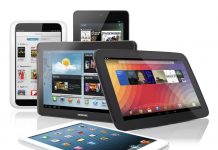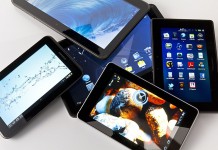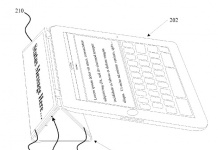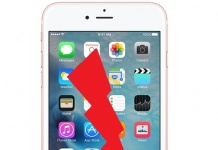 That’s what this article in the LA Times tech blog says, and on pretty good authority too.
That’s what this article in the LA Times tech blog says, and on pretty good authority too.
Evidently light emitting devices like a cellphone or the iPad can cause the inhibition of the body’s secretion of melatonin, which is what puts your body to sleep.
Because users hold those devices so close to their face, staring directly into the light, the effect is amplified compared with, say, a TV across the room or a bedside lamp, said Frisca Yan-Go, director of the UCLA Sleep Disorders Center in Santa Monica. …
“The take-home lesson is that insomnia and electronics gadgets emitting light should not [be] mixed before bedtime,” UCLA Neurology Clinic Director Alon Avidan, also an associate professor at the university, wrote in an e-mail. However, “Kindle is better for your sleep,” he wrote in another e-mail.


































This is total BS. I’ve read dozens of books on the Kindle that put me to sleep and have not noticed any difference since using an iPad: Boring books put me to sleep no matter what the source of light.
(P.S. I’ve discovered that using an iPad case blocks light from my wife’s view better than having a light on with a Kindle — so she goes to sleep faster.)
Bottomline: I think this is a case-by-case issue and shouldn’t be elevated to a “trend story” yet.
Rex, I agree with you. The Kindle will require a book light–and unlike the iPad display, the light probably won’t be timed to turn off after the user hasn’t tapped the screen in X minutes. There are various complexities, such as individuals’ sensitivity to certain frequencies of light, and in the end this is truly case by case. I’d love to hear from other iPad owners. Journalists, academics and others should not reach hasty conclusions. If they have iPads and Kindles at hand to read/sleep with and compare, then so much the better.
David
I have to disagree with the article as well. If this was true, I wouldn’t fall asleep clasping my iPod touch. Although perhaps it’s because I don’t “so close to their face, staring directly into the light” perhaps it’s more about needed reading glasses than the device.
What about an iPod becuase I stay up late on my iPod all the time and I sleep fine!
I don’t have an iPad, but I have read on an iPod touch since right after they came out. (Before then I read on a series of Palm handhelds/smartphones.) I don’t want ANY device to shine in my face like a flashlight in a dark room, so I usually prefer to read with a black background with light gray text at night to make it easier on the eyes. Dark room, dim screen – I have no trouble falling to sleep.
The think the issue I would have with an iPad and bedtime reading is the possibility of injury. I once dropped my touch on my head when my hand went slack as I started falling asleep. If that had been an iPad, it really would have hurt. (Of course, I would have to hold it differently than I hold the touch…)
I agree that this should be looked at on a case by case basis.
Surprisingly reading (on the iPhone) makes me fall asleep even more.
William, theamazingipad.com
Marsha and the others are right. Light is light. Our eyes have no ability to distinguish between a photon coming directly from its source (the iPad) and one bouncing off an epaper screeen (the Kindle).
Unless we stumble about in the dark for an hour before bedtime, we’ll be triggering our light-means-awake instincts doing any sort of reading. But I can’t think of anything less lit-up than reading something on iPod touch, in my case with a black screen and red letters. I relax and fall asleep quite easily and I suspect the same is true of an iPad. I’d need much more light to read a Kindle.
These experts remind of those in the late 19th century who insisted that wearing scratchy wool underwear was good for one’s health.
Actually, given the choice of having the least possible eye strain, I’d prefer the reflected light of a dimmed clip-on light with an e-ink screen to an LCD screen from, say, a laptop, for reading serial text with no eye relief the way there is in web surfing.
I have the laptop on a small table right near my head and the Samsung’s 10.2″ matte/semi-glossy screen (no reflections) sends light direct to the eyes. That is so much more fatiguing for my eyes, even with the whites quite dimmed down, that it HELPS me fall asleep even faster.
The netbook screen can be rotated every which way, with the ctrl-alt-arrow keyes.
Now, I don’t know what the quality of the sleep might be, as determined by scientific instruments, but I personally find that reading with direct light into my eyes when sleepy just makes me sleepier. And my netbook shuts itself off after awhile anyway.
If I want to stay awake to finish something, I use the e-ink device (in my case, the Kindle).
I use both a Kindle (with a headlamp) and an iPod for bedtime reading.
I set the iPod to show green text on a black background and dim the text down a little (in Stanza this is easy).
I have not noticed any problem with falling asleep after reading on the iPod.
Maybe this is something that varies between individuals. If I have a bout of insomnia I will try foregoing reading on the iPod. But for regular use I haven’t been noticing any problem.
I think the statement was ‘iPad and insomnia don’t mix’. seems obvious that the naysayers here don’t have insomnia, since all report ‘falling asleep’ and ‘sleeping fine’.
regardless what people’s feelings and beliefs are on the matter, light plays a significant role in our biochemical processes. the underlying mechanisms and resulting effects aren’t completely understood, but are being researched. there’s an article on some of the work being done in the April 10 issue of Science News.
@asphalt – As the first naysayer in this thread, I’ll note that I *do* know a lot about insomnia as I suffered from it for years before seeking treatment. Its causes (and treatments) are varied and complex so to suggest (without research) that iPads can contribute to insomnia more than Kindles is nothing more than conjecture. If one suffers from insomnia, they should seek help from a doctor or a sleep center associated with a medical center. Bottomline: Choosing to read a Kindle with a lamp instead of using an iPad lit with a backlit screen is not going to be a big factor in addressing real problems like weight issues, sleep apnea, poor nutrition, lack of exercise, alcohol use, caffeine, etc., ect.
Too many conjurers around these days in the ereader world. Why didn’t all these “health” problems surface during the last ten years while I read my Rocket eBook?
As Mike says, photons are photons. Both the bedside lamp and the iPad are artificial light sources. Millions of people around the world fall asleep each night watching another light-emitting device, the television. This business about emitted versus reflective seems to be pretty much complete bosh, an urban legend for the 21st century.
Light levels are a different matter, though. People’s sleep patterns are sensitive to them. If you find yourself staying awake after reading on the iPad for an hour or two, it’s possible the screen is putting out too much light for your particular biochemistry. Turn down the backlight, or configure it for green text on a black background, as Andrys suggests. But you can have the same problem with an overly bright bedside lamp and a regular printed book.
The last three nights I have gone to bed and read for a few hours with my Nook Color…and been up all night. It’s 1:49pm and I still haven’t gone to bed after reading for hours with my Nook again. I will have to curtail my bedtime reading on the Nook and stick to wide awake reading on it!
Jones, it sounds like you simply need less interesting material to read. 🙂
I was reading a technical manual and woke up well-rested this morning, my Nook sitting on my chest.